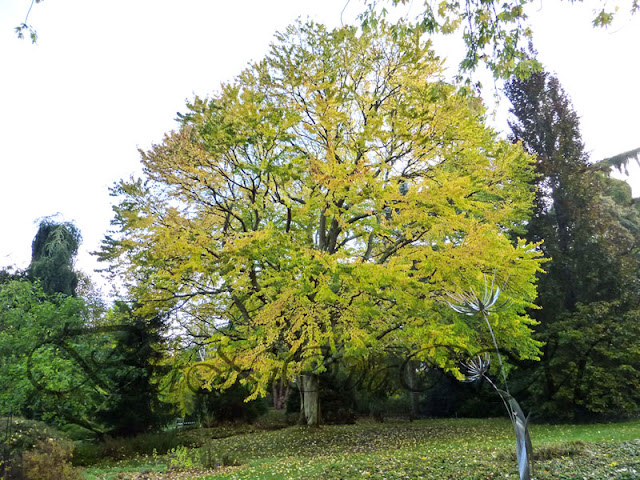 |
~ KATSURA TREE ~A medium-sized deciduous tree with heart-shaped foliage that smells strongly of caramel during autumn. Needs a lot of space. |
CERCIDIPHYLLUM JAPONICUM
CERCIDIPHYLLACEAE
EN: Katsura Tree, D: Japanischer Kuchenbaum, FR: Arbre au Caramel, ESP: Katsura, ZH: 连香树
EN: Katsura Tree, D: Japanischer Kuchenbaum, FR: Arbre au Caramel, ESP: Katsura, ZH: 连香树
Description:
Medium-sized, deciduous tree, that forms a beautiful crown with evenly spaced branched when given time and space, sometimes grows as multi-stemmed specimen, opposite red pointy buds, leaves are roundish heart-shaped and very similar to the Judas Tree (Cercis siliquastrum) which gives the genus its name, Cercidiphyllum leaves are smaller and greener. In autumn they turn to a vibrant yellow (stronger colour on acid soil) and release a strong sweet scent like burnt sugar, tiny red flowers emerge with the young bronzy foliage in spring, dioecious, during summer very small bean-like green seed pods form on the branches, turning brown or black when ripe.
Introduced to cultivation in 1881.
Height: 10 - 18m (35 - 60ft)
 |
| Buds are red and opposite. |
 |
| The heart-shaped leaves look very similar to those of Cercis sp. |
Maintenance:
Newly planted trees should be staked for a couple of years to avoid wind rock. After establishing remove stake. Remove any competing leaders, otherwise no formative pruning necessary and should not be attempted. During the dormant season dead wood can be removed.
Propagation:
Best done by seed, sow fresh in autumn into a light mix (1 part compost + 1 part sand or Cornish grit), place in cold frame. Cultivars are grafted onto seed-raised rootstocks.
 |
| The bark is roughly textured and somewhat attractive. |
Meaning of plant name:
CERCIDIPHYLLUM: Cercis-leaved
JAPONICUM: from Japan
Origin: Japan, China
Growing conditions:
grows in any deep, fertile soil, acid or alkaline soil (better autumn colour on acid soil), on clay, sand or loam, however would resent waterlogged conditions, sun or partial shade, shelter from strong winds.
Hardiness: H5 - Hardy in most places throughout the UK even in severe winters (-15 to -10°C)
Pests and Diseases: generally no problems
Other useful information:
-
 |
| Young emerging leaves are bronzy at first before they green up. |
 |
| Bark detail. |
 |
| Some left over seed pods in winter. |
 |
| Autumn colour. As they change colour and get hit by the first frosts a strong sugary scent is released. |
 |
| Cercidiphyllum japonicum - Katsura Tree |
Have a look at Related Species
